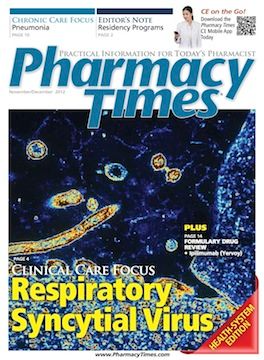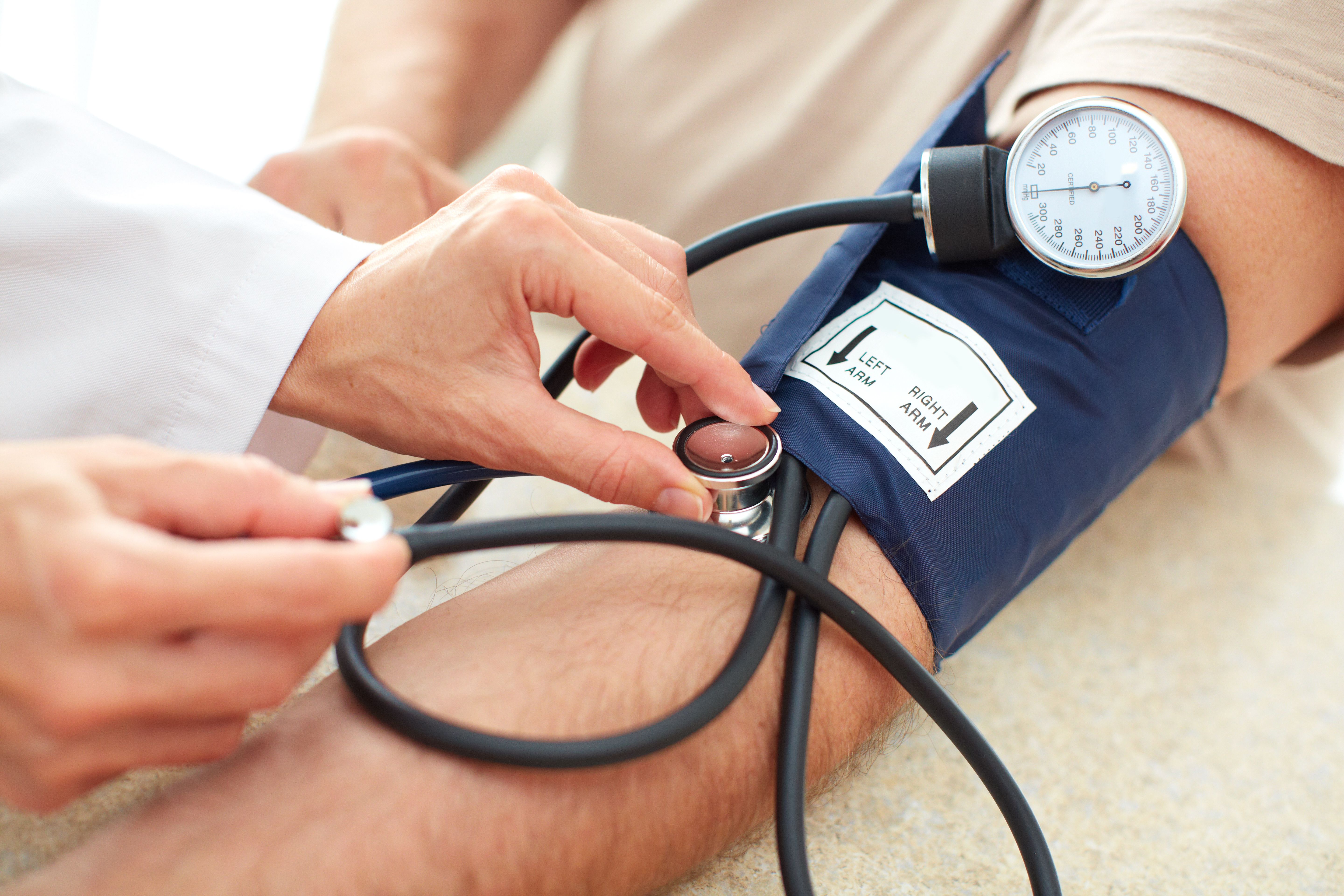Publication
Article
Pharmacy Practice in Focus: Health Systems
Respiratory Syncytial Virus
Author(s):
Respiratory syncytial virus, or RSV, is the most common cause of lower respiratory tract infection (LRTI) and hospitalization in infants.1 Approximately 90% of all children are infected with RSV by 2 years of age. The terms bronchiolitis and RSV are often used interchangeably, since 80% of bronchiolitis cases are caused by RSV. 2 Although RSV has a very low mortality rate of less than 1%, it is associated with high morbidity. The estimated cost of bronchiolitis is up to $700 million in the United States annually.1 RSV infections generally follow a seasonal pattern with December through March being the peak time for infection in the United States.1
Clinical Manifestation and Classification
Most children with RSV will experience a mild upper respiratory tract infection that is similar to the common cold. Approximately 40% will progress to an LRTI.1 Children most at risk for severe disease requiring hospitalization are those born prematurely, those with congenital heart disease, and children with pulmonary disease such as chronic lung disease.1
On examination, patients with severe disease will have nasal flaring, retractions, and tachypnea along with rhinitis, cough, and wheezing. Severe cases of RSV are physiologically characterized by increased mucous production, acute inflammation of the respiratory tract, edema, and necrosis of epithelial cells within the bronchioles. Ultimately, the airways become obstructed, which results in a characteristic wheeze accompanied by hypoxia and hypercapnea.1
Diagnosis
The diagnosis of RSV is typically made from clinical observation and history (Table 11,3). Although laboratory studies, such as rapid antigen testing, may be useful in excluding other infectious causes, these results will rarely alter management. For this reason, the American Academy of Pediatrics (AAP) recommends deferring from the use of routine laboratory and radiologic studies when diagnosing bronchiolitis.1
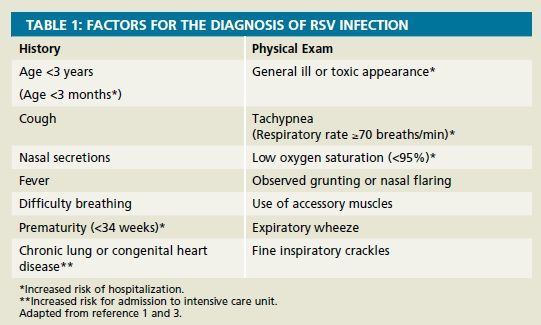
Non-Pharmacologic Treatment
The mainstay of RSV treatment remains largely supportive. Intravenous fluids are usually warranted to maintain hydration. Children with RSV are susceptible to dehydration due to fever. Supplemental oxygen is appropriate for children with oxygen saturations <90%. Nasal suctioning with saline removes upper airway obstruction and provides symptomatic relief, particularly prior to feeding.4 The saline helps to thin mucous, making suctioning more effective. However, deep suctioning should be avoided, as it may increase nasal edema and cause obstruction.1,4 Nasal decongestants have not shown any benefit and should not be used in children less than 2 years of age.5
Pharmacologic Treatment
Several pharmacologic therapies have been studied for the treatment of RSV, but few therapies have demonstrated consistent benefit. The economic burden of RSV is directly related to the length of hospital stay, therefore most bronchiolitis studies examine length of stay as the primary outcome.
Bronchodilators are not recommended for routine use due to lack of consistent efficacy. However, beta agonists such as inhaled epinephrine and albuterol are commonly integrated into hospital bronchiolitis protocols due to the potential benefit for some patients. Bronchodilators do not alter the course of illness and should only be continued in children that demonstrate clear benefit from their use.1
Corticosteroids are utilized in approximately 60% of patients admitted to the hospital. 1 However, inhaled and systemic corticosteroids have failed to demonstrate statistical improvement in hospital length of stay, clinical score, or readmission rates in clinical trials. Therefore, routine use of corticosteroids in RSV is not recommended.1,3
The role of ribavirin for the treatment of RSV is highly controversial. While ribavirin has demonstrated marginal benefit in sub-populations, there is considerable burden and risk associated with its use.1,6 Nebulized ribavirin must be administered in a well-ventilated room, usually negative pressure, and via continuous aerosolization up to 18 hours per day. Ribavirin poses serious risk to pregnant health care workers, as it is a pregnancy category X medication and is a nebulized formulation. Additionally, it is quite expensive. Ribavirin may have a role in patients with severe infection who are immunocompromised or that have cardiopulmonary disease, but routine use of ribavirin is not recommended.1,6
There is currently no recommendation from the AAP regarding the use of nebulized hypertonic saline (NHS) for RSV treatment. However, several recent randomized trials and a Cochrane meta-analysis have demonstrated improvement in clinical score and a significant reduction in hospital length of stay from NHS therapy.7-13 The ability to reduce hospital length of stay by approximately 1 day and the affordability of NHS make it an attractive therapy for RSV. Some practitioners may be hesitant to utilize NHS due to the potential for bronchospasm. This risk may be minimized by pre-treating with a bronchodilator.
Antibiotics should only be administered to children with secondary bacterial infection (SBI).1,3 Observed rates of SBI from retrospective studies have been between 0% and 3.7%.1 Recent studies have investigated the role of macrolides in RSV infection due to their anti-inflammatory properties. At this time, there is no evidence of significant benefit that would outweigh the cost and potential for bacterial resistance to recommend routine use of macrolides for RSV infection.15-17
Montelukast, a leukotriene receptor antagonist (LRA), has also been investigated for the treatment of RSV. It has been hypothesized that the anti-inflammatory action of LRAs may ameliorate symptoms and alter the course of infection. However, LRAs have demonstrated inconsistent benefit in currently published trials.3,18,19
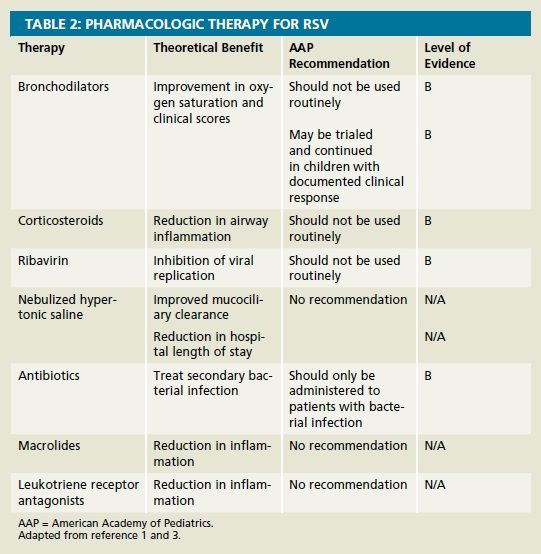
Prevention
Basic prevention of severe RSV infection involves good hand hygiene, eliminating cigarette smoke exposure, minimizing the infant’s exposure to other children asmuch as possible, and avoiding contact with other infected individuals. Additionally, breast-feeding should be recommended, as it decreases the risk of RSV acquisition as well as other lower respiratory tract infections.1
Proper patient selection for palivizumab therapy is an area where hospital pharmacists play a major role during RSV season. Palivizumab is an intramuscular (IM) injection that decreases the rate of hospitalization from RSV infection in high-risk patients by about 50%.18,19 Palivizumab is dosed at 15 mg/kg/dose IM once monthly during the RSV season for a maximum of 5 doses. Palivizumab is expensive and should only be administered to patients most likely to benefit from its use. It is recommended that hospitalized infants at risk for severe RSV receive palivizumab 48 to 72 hours prior to discharge. Guidelines for palivizumab therapy are listed in Table 3.1,18
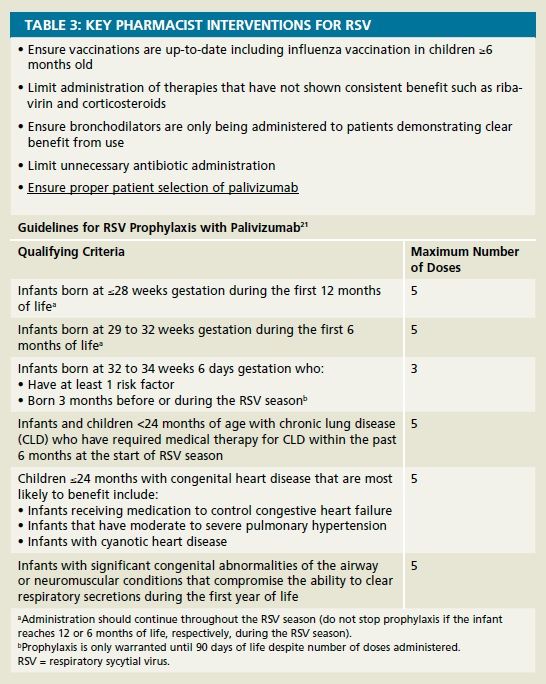
Research is currently being targeted at formulation of an RSV vaccine. Although it does not appear that there will be a commercially available RSV vaccine in the near future, it is clear that hospital pharmacists will undoubtedly play an integral role in proper utilization of the product once it is available.
Julie E. Pardy received her doctorate of pharmacy at Ferris State University and completed a PGY1 Pharmacy Practice Residency at Spectrum Health in Grand Rapids, MI. Shannon R. Mayes, PharmD, graduated from the University of Kentucky College of Pharmacy, completed 2 years of residency training at UNC Chapel Hill, and now serves as the Clinical Pharmacy Inpatient Supervisor for Kosair Children’s Hospital. Kendra C. Bosley, PharmD, received her degree from Butler University in Indianapolis and completed a PGY-1 Pharmacy Practice Residency at Kosair Children’s Hospital, where she stayed on to become the Neonatal Intensive Care Clinical Specialist.
References
- American Academy of Pediatrics Subcommittee on Diagnosis and Management of Bronchiolitis. Diagnosis and management of bronchiolitis. Pediatrics. 2006;118:1774-1793.
- Zentz, Suzanne E. Care of infants and children with bronchiolitis: a systematic review. J Pediatr Nurs. 2011;26:519-529.
- Zorc JJ, Hall CB. Bronchiolitis: recent evidence on diagnosis and management. Pediatrics. 2010;125:342-349.
- Wagner. Bronchiolitis. Pediatrics in Review. 2009;30(386):386-394.
- Dawson-Caswell M, Muncie HL. Respiratory syncytial virus infection in children. Am Fam Physician. 2011;83(2):141-146.
- Li L, Avery R, Budev M, Mossad S, Danziger-Isakov L. Oral versus inhaled ribavirin therapy for respiratory syncytial virus infection after lung transplantation. J Heart Lung Transplant. 2012;31(8):839-844.
- Kuzik BA, Al Qadhi SA, Kent S, et al. Nebulized hypertonic saline in treatment of viral bronchiolitis in infants. J Pediatr. 2007;151(3):266-270, 2701.e1.
- Langley JM, Smith MB, LeBlanc JC, Joudrey H, Ojah CR, Pianosi P. Racemic epinephrine compared to salbutamol in hospitalized children with bronchiolitis; a randomized controlled clinical trial. BMC Pediatrics. 2005;5:7.
- Tal G, Cesar K, Houri S, Ballin A, Mandelberg A. Hypertonic saline/epinephrine treatment in hospitalized infants with viral bronchiolitis reduced hospitalizations: 2 years experience. Isr Med Assoc J. 2006;8(3):169-173.
- Luo Z, Liu E, Luo J, et al. Nebulized hypertonic saline/salbutamol solution treatment in hospitalized children with mild to moderate bronchiolitis. Pediatr Int. 2010;52:199-202.
- Mandelberg A, Tal G, Witzling M, et al. Nebulized 3% hypertonic saline solution treatment in hospitalized infants with viral bronchiolitis. Chest. 2003;123:481-487.
- Luo Z, Fu Z, Liu E, et al. A randomized controlled trial of nebulized hypertonic saline treatment in hospitalized children with moderate to severe viral bronchiolitis. Clin Microbiol Infect. 2011;17(12):1829-1833.
- Zhang L, Mendoza-Sassi RA, Wainright C, Klassen TP. Nebulized hypertonic saline solution for acute bronchiolitis in infants. Cochrane Database Syst Rev. 2008;(4):CD006458.
- Ralston S, Hill V, Martinez M. Nebulized hypertonic saline without adjunctive bronchodilators for children with bronchiolitis. Pediatrics. 2010;126(3):e520-e525.
- Pinto LA, Pitrez PM, Luisi F, et al. Azithromycin therapy in hospitalized infants with acute bronchiolitis is not associated with better clinical outcomes: a randomized, double-blinded, and placebo-controlled clinical trial. J Pediatr. 2012.
- Kneyber MC, van Woensel JB, Uijtendaal E, Uiterwaal CS, Kimpen JL. Azithromycin does not improve disease course in hospitalized infants with respiratory syncytial virus (RSV) lower respiratory tract disease: a randomized equivalence trial. Pediatr Pulmonol. 2008;43(2):142-149.
- Tahan F, Ozcan A, Koc N. Clarithromycin in the treatment of RSV bronchiolitis: a double-blind, randomized, placebo-controlled trial. Eur Resp J. 2007;29:91-97.
- Amirav I, Luder AS, Kruger N, et al. A double-blind, placebo-controlled, randomized trial of montelukast for acute bronchiolitis. Pediatrics. 2008;122(6): e1249-e1255.
- Zedan M, Gamil N, El-Assmy M, et al. Montelukast as an episodic modifier for acute viral bronchiolitis: a randomized trial. Allergy Asthma Prc. 2010;31:147-153.
- Committee on Infectious Diseases. From the American Academy of Pediatrics: policy statements: modified recommendations for the use of palivizumab for the prevention of respiratory syncytial virus infections. Pediatrics. 2009;124(6):1694-701.
- Committee on Infectious Diseases. Modified recommendations for use of palivizumab for prevention of respiratory syncytial virus infections. Pediatrics. 2009;124:1694-1701.
Newsletter
Stay informed on drug updates, treatment guidelines, and pharmacy practice trends—subscribe to Pharmacy Times for weekly clinical insights.

